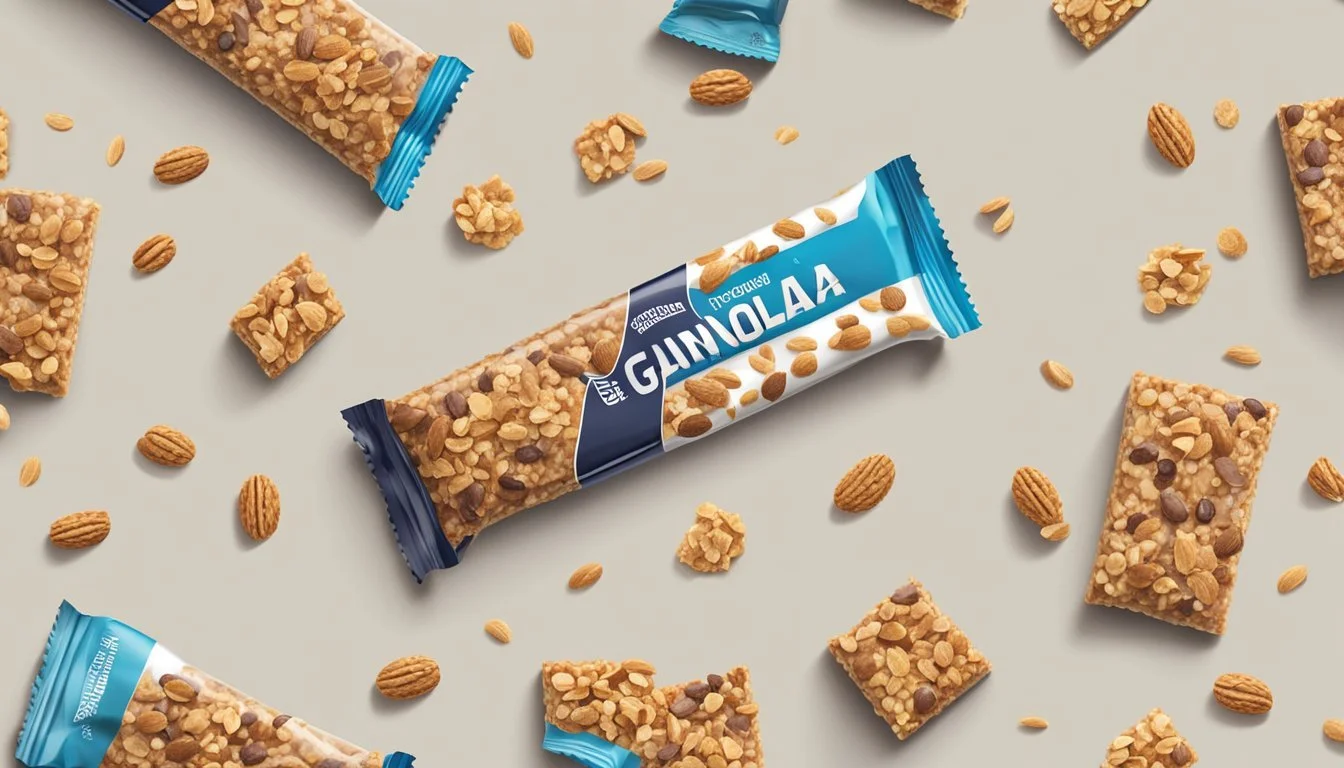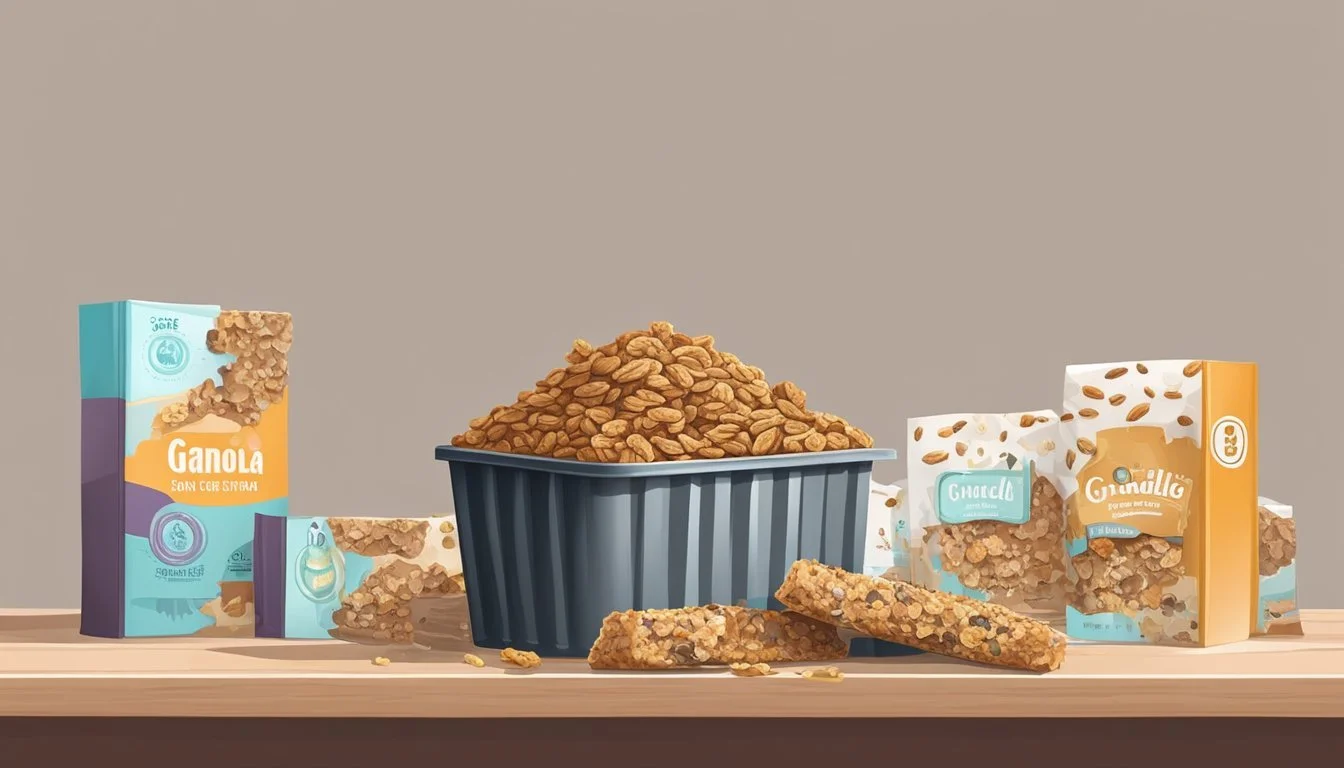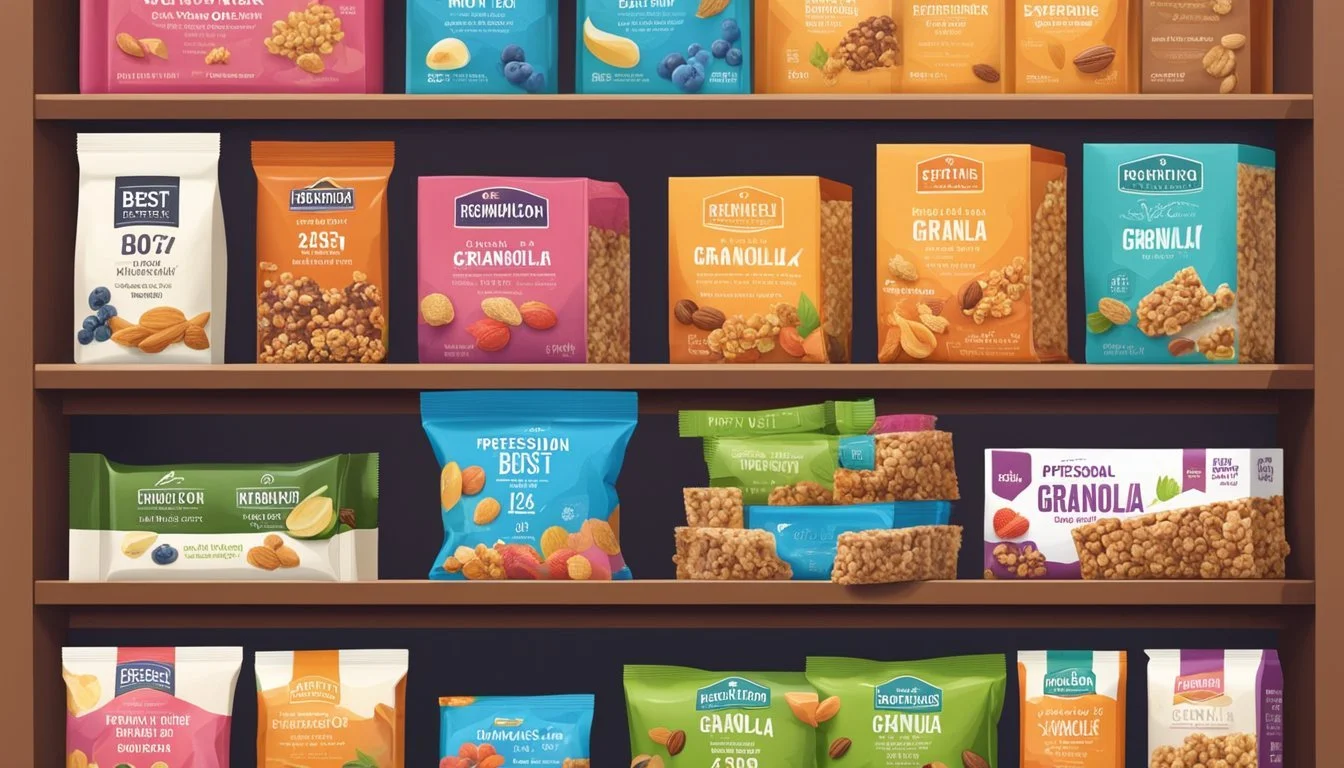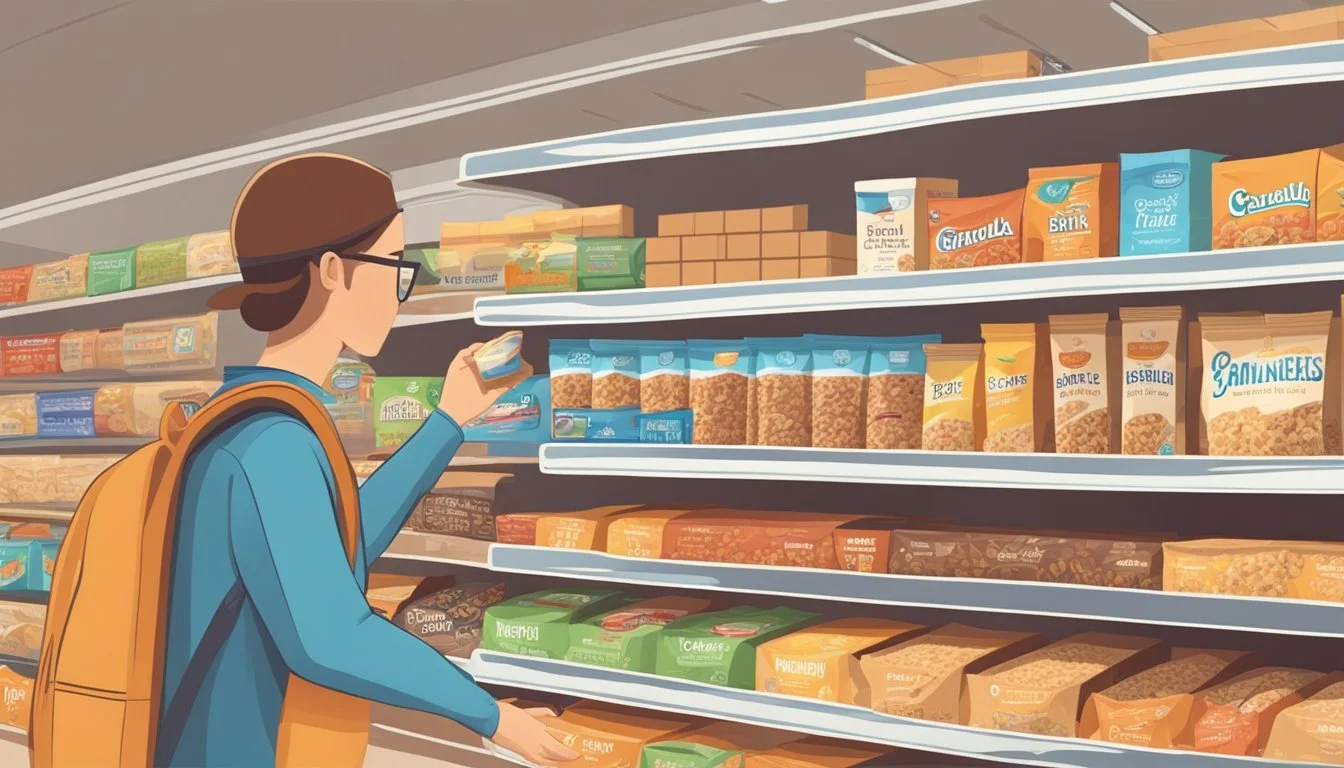Does Granola Bars Go Bad?
Shelf Life and Storage Tips
Granola bars are a convenient and nutritious option for anyone seeking a quick snack. Whether you're on-the-go or just need a boost of energy, these compact treats offer a blend of grains, nuts, and often dried fruit that make them an appealing choice. Granola bars do expire and will eventually go bad, though their shelf life may extend beyond the printed expiration date under proper storage conditions.
Unopened granola bars can maintain their quality for 6-8 months past their expiration date if stored in a cool, dry place. Once opened, the longevity can vary significantly depending on the ingredients and presence of preservatives. Proper storage, such as sealing them in an airtight container, plays a crucial role in preserving their freshness and nutritional value for an extended period.
Despite their durability, granola bars should be checked for any signs of spoilage. Changes in texture, off smells, or discoloration are indicators that it's time to discard them. Understanding these factors can help you make informed choices and ensure you always enjoy your granola bars at their best.
Understanding Granola Bars
Granola bars combine various ingredients to offer a convenient and nutritious snack. Key factors include the types of ingredients used, their nutritional value, and the different varieties available.
Ingredients and Composition
Granola bars typically include oats, nuts, honey, dried fruit, and seeds. These components work together to provide flavor, texture, and nutrition. Oats are often the base, offering a source of fiber. Nuts and seeds add protein and healthy fats. Honey serves as a natural sweetener, binding the ingredients.
Sweeteners and preservatives are common in store-bought granola bars to extend shelf life. Homemade granola bars may use rolled oats and natural sweeteners to avoid additives. Ingredient quality significantly impacts the final product's taste and nutritional benefits.
Nutritional Value
The nutritional value of granola bars depends on their ingredients. Many are high in protein and fiber, making them a filling and healthy snack. Oats contribute to fiber, aiding digestion. Nuts and seeds offer proteins and healthy fats, important for sustained energy.
Some granola bars also include additional protein sources, enhancing their benefits for active individuals. The presence of dried fruit can increase sugar content, so those watching their intake should choose bars carefully. Store-bought options may contain more preservatives and sweeteners than homemade versions, affecting their nutritional profile.
Types of Granola Bars
Granola bars come in a variety of forms, from chewy to crunchy. Chewy granola bars are often softer and use ingredients like honey or syrup to maintain their texture. Crunchy granola bars are typically baked, giving them a distinct snap.
There are also protein bars, which include added protein to support workout recovery, and energy bars focused on providing quick energy through carbohydrates. Homemade granola bars offer customization of ingredients, allowing control over quality and nutrition. Store-bought granola bars are convenient with a longer shelf life due to added preservatives and packaging.
Different types cater to varying preferences and nutritional needs, making granola bars a versatile snack option.
Proper Storage Techniques
Proper storage of granola bars ensures they stay fresh, maintain their nutritional value, and remain safe to eat. Important considerations include storing them in a cool, dry environment, using airtight containers, and optionally refrigerating or freezing for extended shelf life.
Ideal Storage Conditions
Granola bars should be stored in a cool and dry place to maintain optimal freshness.
Exposure to heat and moisture can cause the bars to spoil or lose their crisp texture. The best places to store granola bars are in a pantry or cabinet away from direct sunlight.
It is advisable to keep them at room temperature, ensuring the environment is free from excessive humidity. Ensuring that the storage area is also free from strong odors helps preserve the bar's original flavor.
Refrigeration and Freezing
Refrigerating granola bars can extend their shelf life but might affect their texture.
For those looking to preserve granola bars for an extended period, freezing is a viable option. To freeze granola bars, wrap each bar individually in plastic wrap to prevent moisture from getting in.
Then, place the wrapped bars in an airtight container or a resealable freezer bag. This method not only prolongs shelf life significantly but also ensures the bars stay fresh and retain their flavor.
Packaging and Containers
Maintaining the original packaging is ideal as it is designed to retain freshness.
If the packaging is damaged, transferring granola bars to an airtight container is crucial. Containers should be sealed tightly to prevent exposure to air and moisture, which can cause spoilage.
Using glass or BPA-free plastic containers is recommended, as they do not retain odors that could alter the flavor of the granola bars. Alternatively, resealable plastic bags or vacuum-sealed bags can also be effective in preserving freshness.
Shelf Life and Spoilage Indicators
Granola bars are a popular choice for those seeking a quick and nutritious snack. Understanding their shelf life and recognizing spoilage indicators can ensure that you consume them at their best quality and avoid any potential health risks.
Expiration and Best-By Dates
Granola bars often come with expiration dates, but these are primarily indicators of peak freshness rather than absolute safety limits. Unopened granola bars, if properly stored, can typically last 6-8 months past their expiration or best-by dates.
Factors like storage conditions play a critical role in extending their shelf life. Keeping them in a cool, dry place away from direct sunlight is essential. Once opened, granola bars should be consumed within a few weeks to ensure they remain fresh and tasty.
Signs of Spoiled Granola Bars
Recognizing spoiled granola bars is crucial to avoid health risks. Here are some common signs to look out for:
Off Smell: A rancid or sour odor can indicate spoilage.
Discoloration: Any change in the original color might signal mold or spoiled ingredients.
Taste Test: If the granola bar tastes different or unpleasant, it might be best to discard it.
Texture Changes: Granola bars should remain crunchy. If they become soggy or overly stale, they may no longer be safe to eat.
Observing these spoilage indicators ensures you consume only quality granola bars.
Factors Affecting Longevity
Several factors impact the shelf life of granola bars:
Moisture and Temperature: High moisture and fluctuating temperatures can accelerate spoilage.
Exposure to Air: Granola bars should be kept in airtight containers to prevent exposure to air which can lead to them becoming stale.
Proper Storage: Storing granola bars in a cool, dry place, away from direct sunlight and heat sources, helps maintain their quality.
Packaging: Intact, sealed packages are key to maintaining freshness. Once opened, use resealable bags or airtight containers for storage.
Understanding these factors can help you prolong the shelf life of your granola bars and ensure they remain fresh for as long as possible.
Food Safety Concerns
Expired granola bars can pose various health risks if consumed without careful evaluation. Understanding potential dangers and methods to assess safety is essential to make informed decisions.
Risk of Food Poisoning
Expired granola bars can develop harmful bacteria, which may lead to food poisoning. Rancidity and mold growth are key indicators of spoilage.
Rancidity occurs when fats and oils in the bar break down, often resulting in an unpleasant taste and smell. Consuming rancid granola bars can cause digestive issues.
Mold growth can be identified by visible signs such as green, white, or black spots. Moldy granola bars are not safe to eat and can lead to severe health risks like respiratory problems and allergies.
Assessing Consumption Safety
Evaluating the safety of expired granola bars involves a few steps. First, conduct a sensory evaluation by checking the taste, texture, and flavor.
If the bar tastes off or has an unusual texture, it's best to discard it. Inspect for signs of mold growth such as visible spots or discoloration.
Check the packaging for any damage, as dents or tears can compromise the safety of the product. Proper storage conditions, such as keeping granola bars in a cool, dry place, can extend their shelf life and maintain their quality.
Ensuring these steps can help determine if expired granola bars are safe to eat.
Maximizing Freshness and Taste
Maintaining the freshness and taste of granola bars involves strategic storage and thoughtful use of ingredients. Effective use of preservatives and the option of homemade granola bars are key factors.
Effective Use of Preservatives
Preservatives play a significant role in extending the shelf life of granola bars. Ingredients like tocopherols (vitamin E) and ascorbic acid (vitamin C) are commonly used to maintain freshness.
These chemicals combat oxidation, preserving both the taste and texture of the granola bars.
Natural preservatives, such as honey, also enhance sweetness and shelf stability. It's essential that bars are properly stored in airtight containers to remain at peak quality.
Store granola bars in a cool, dry place to maximize freshness.
Homemade Alternatives
For those interested in homemade granola bars, creating your own allows better control over ingredients and quality. Opt for fresh, high-quality ingredients to ensure the best taste and nutritional value.
Use an oven to bake granola bars, ensuring an even and thorough cooking process. Adding natural sweeteners like honey or maple syrup can help maintain sweetness without artificial additives.
Packaging homemade granola bars in sealed bags or containers helps keep them fresh and shelf-stable for longer periods.
Conducting a Taste Test
To guarantee peak taste and quality, conducting a taste test is useful. Sample a granola bar from a newly opened package and another from a batch stored for several months.
Assess aspects like texture, sweetness, and overall flavor to ensure they meet your expectations. A properly conducted taste test can identify any changes in freshness and quality over time.
Regularly testing stored granola bars helps in adjusting storage practices and ingredient choices to maintain the ideal taste.
Assessing the best-by date can also provide a rough guideline, though actual spoilage might occur earlier or later depending on storage conditions.
Versatility in Use
Granola bars offer more than just a quick snack. They can be incorporated into various meals and recipes, providing flexibility and convenience.
Creative Serving Ideas
Granola bars can be used in multiple creative ways beyond snacking. Topping options include crushing them over a bowl of yogurt or mixing them into a smoothie for added texture and flavor.
For breakfast, granola bars can be crumbled into a bowl and treated like granola cereal. Simply add milk or a milk alternative to make a satisfying morning meal.
In baking, granola bars can be integrated into recipes. They can be chopped up and mixed into cookie dough or used as a crust base for cheesecakes and pies.
Alternatives to Eating Out of Hand
For those seeking alternatives to eating granola bars directly, there are practical approaches. When stored properly, granola bars can be utilized in homemade trail mix. Break them into small pieces and combine with nuts, seeds, and dried fruit for a nutritious blend.
They can also be used as an ingredient in energy balls. Combine smashed granola bars with peanut butter, oats, and a sweetener to create bite-sized treats perfect for on-the-go.
In addition, granola bars can enhance salads by adding a sweet and crunchy element. Sprinkle broken granola bar pieces over fresh greens to add a unique twist.
Granola bars can serve diverse purposes, making them a versatile ingredient in many dishes and applications.
Handling and Preventing Waste
Managing the shelf life of granola bars involves proper storage and creative reuse to minimize waste. Opened granola bars require special attention to avoid spoilage and freezer burn.
Reusing Stale Granola Bars
Granola bars that have gone stale can be reused in various ways. Crumble stale bars into yogurt or over ice cream for a crunchy topping.
Bake them into cookies or energy balls by mixing with peanut butter and oats. Another option is to create granola crumbs for pie crusts. These methods not only extend the life of the bars but also prevent waste.
Disposal and Environmental Impact
When granola bars become inedible, consider composting them if the ingredients are organic. Check local composting guidelines to ensure proper disposal.
Packaging can often be recycled, so separating wrappers from general waste helps reduce environmental impact. Understanding disposal methods aids in reducing the ecological footprint of spoiled granola bars.
Smart Shopping Tips
Making informed choices when purchasing granola bars can help maintain their quality and extend their shelf life. Key considerations include evaluating expiration dates and best-by dates, as well as implementing effective bulk buying and storage strategies.
Reading Labels for Shelf Life
Checking the expiration date and best-by date on the packaging is essential for ensuring the granola bars are fresh. These dates indicate the period within which the product is expected to maintain its peak quality. While granola bars are often safe to eat past these dates, their flavor and texture may change.
Look for bars that use quality packaging to keep the contents fresh. Airtight wrappers help to protect against moisture and contamination. Verify storage instructions on the label to provide the optimal conditions and prevent spoilage.
Pay attention to ingredient lists. Natural and preservative-free options might have a shorter shelf life but offer a healthier alternative.
Bulk Buying and Storage Strategies
When buying granola bars in bulk, choose a mixture of flavors and types to prevent monotony. Make sure to select packages farthest from their expiration dates to maximize shelf life.
Upon bringing them home, store the granola bars in a cool, dry place. Use an airtight container to prevent exposure to air and moisture, extending their lifespan. This setup will minimize the risk of spoilage and maintain their quality.
Rotate your stock frequently, placing newly purchased bars at the back and older ones at the front. This ensures that the oldest bars are used first, reducing waste. Buying in bulk can be economical, but proper storage is crucial to preserve quality.










